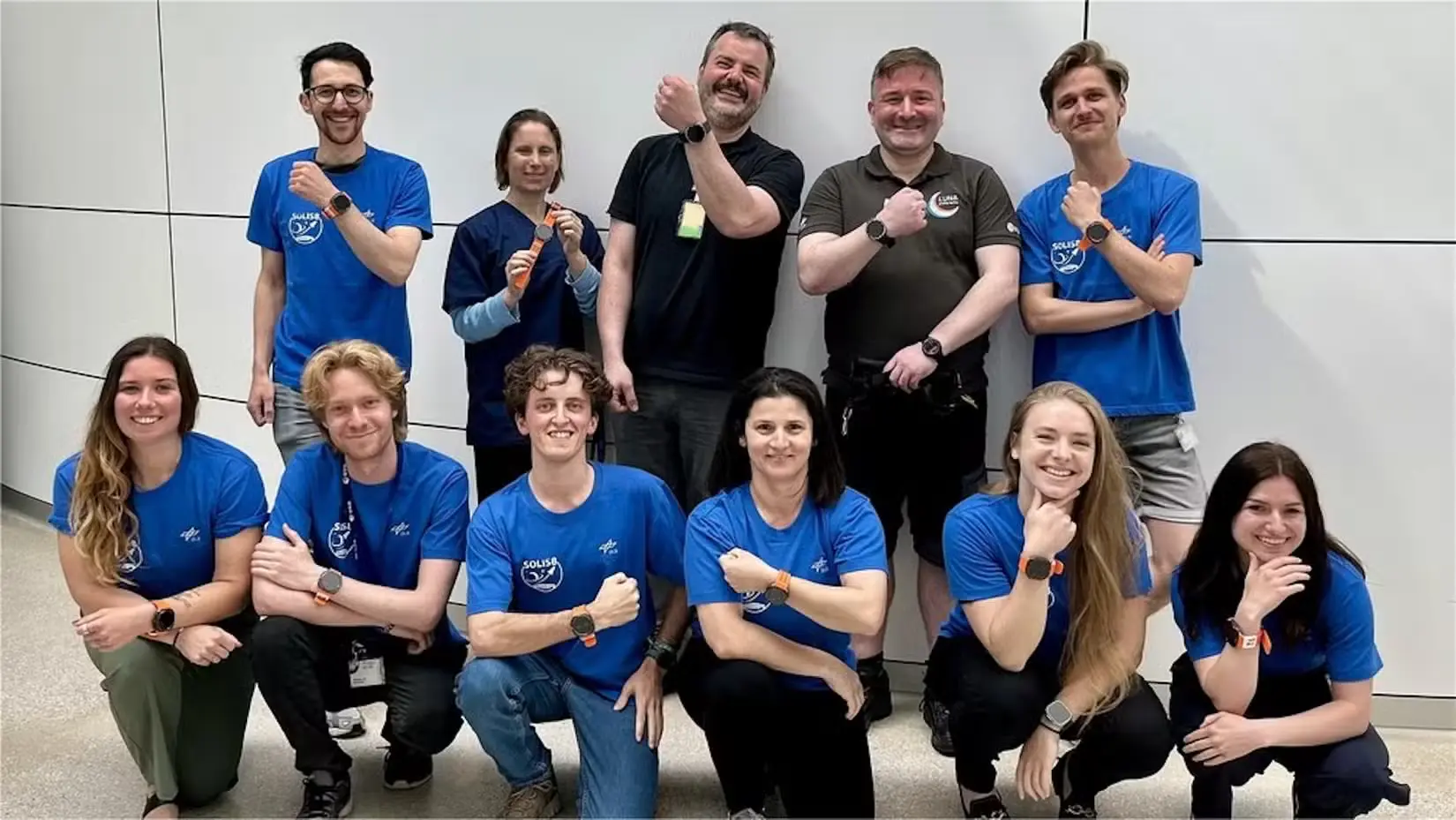| Summary |
|
In a recent study, researchers from the German Aerospace Center (DLR), Samsung Germany, and IT service provider adesso tested smartwatches for health monitoring during an eight-day isolation experiment. The SOLIS8 study, funded by the European Space Agency, simulated a space mission at DLR’s :envihab facility in Cologne.
Six volunteers (three men and three women) lived in a sealed module, cut off from the outside world. The goal was to see if smartwatches could reliably collect and process health data without smartphones or cloud connections.
Health monitoring in remote environments, like space missions or remote research stations, poses unique challenges. There’s often limited access to direct medical care, and many traditional medical devices are bulky, wired, and require professional expertise to operate. In contrast, smartwatches are compact, wireless, and easy to use, making them a practical option for non-medical personnel.
During SOLIS8, participants wore Samsung Galaxy Watch Ultra devices, which recorded vital signs like heart rate and step count. These watches connected directly to a local Wi-Fi network, bypassing the need for smartphones or cloud storage. Adesso developed software to collect and encrypt the data locally, ensuring privacy and security. This setup proved that smartwatches can function independently in extreme conditions.

The study’s success hinged on ease of use. Participants received training from DLR and adesso before the experiment, allowing them to operate the devices intuitively. They wore the watches continuously, except during charging, and reported high satisfaction. “The high level of user acceptance combined with secure encryption opens up new prospects for us,” said Dr. Jens Hauslage of DLR’s Institute of Aerospace Medicine in the study.
Smartwatches offer a practical solution for monitoring health in isolation. They track key metrics like heart rate variability, which can indicate stress or cardiovascular issues, and sleep patterns, which affect mental and physical health. Unlike traditional devices, they don’t require precise electrode placement or extensive wiring. This simplicity is vital in environments where crew members aren’t medical experts.
Data security was a priority in SOLIS8. Christian Kahlo, adesso’s Chief Security Architect, noted that the system used advanced encryption to protect health data. This is especially important in isolated settings, where breaches could compromise mission safety. The ability to process data locally also reduces reliance on external networks, which may be unavailable in space or remote areas.
The findings have implications beyond space travel. In telemedicine, smartwatches could enable remote monitoring of patients in rural areas, where access to doctors is limited. In nursing homes, they could track residents’ health without invasive equipment. These applications could improve care while maintaining patient privacy.
SOLIS8 is a step toward DLR’s planned 100-day isolation study in 2026, called SOLIS100. The longer study will further test smartwatch technology and its effects on crew health in confined settings. Researchers aim to refine software for the “DLR Biobase,” a facility focused on life support and health monitoring for future missions.
Isolation studies like SOLIS8 mimic the challenges of long-duration space missions, such as trips to Mars or lunar bases. Crews face psychological stress from confinement and physical risks from reduced gravity. Continuous health monitoring helps detect issues early, ensuring mission success. The use of smartwatches could make this process more efficient and accessible.
Participants in SOLIS8 followed a strict schedule, mirroring astronaut routines. They performed tasks like docking a virtual spacecraft and simulating microgravity conditions. Daily exercise was mandatory to maintain muscle and bone health, a key concern in space. The smartwatches tracked these activities, providing real-time data to researchers.
The study also highlighted the importance of crew resilience. “While the environment was tightly controlled, the crew spirit remained high throughout,” shared Charlotte Pouwels, a participant on Instagram. “This experience reminded me how much science depends on human adaptability, teamwork, and the willingness to go beyond comfort zones.”
The results of SOLIS8 show how familiar consumer technology could support astronauts, offering a simple but effective way to monitor health in isolated or extreme environments.

